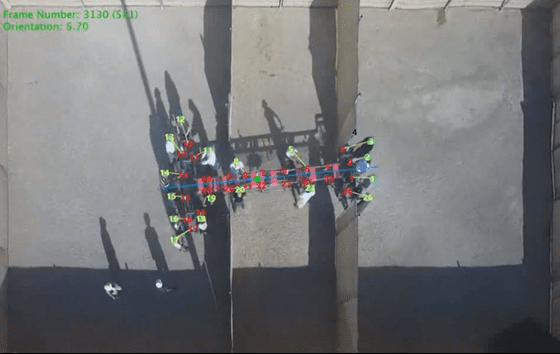Ants outperform humans in solving mazes while carrying objects in groups

Ants, known as social insects, have remarkable intelligence as a group, and in particular, it is said that humans and ants are the only species in nature that can carry objects much larger than their bodies. Taking advantage of this common characteristic, scientists conducted an experiment to see which species is better at carrying large loads in a maze.
Comparing cooperative geometric puzzle solving in ants versus humans | PNAS
Ants prove superior to humans in group problem-solving maze experiment
https://phys.org/news/2024-12-ants-superior-humans-group-problem.html
Professor Offer Finerman of the Weizmann Institute of Science and his colleagues created an 'I'-shaped object with uneven lengths of lines on the top and bottom, set up four partitions, and tested whether ants and humans could carry the object from left to right.

When they had one ant and one human try it and measured the time it took, the human was overwhelmingly faster. However, when they tried it in groups, the results were a little different.

In order to mimic the transportation patterns of ants and humans, Professor Finerman and his team attached 'handles' to the objects carried by the humans and instructed them to pull them. They also divided the humans into two groups: one group was allowed to communicate as much as they wanted, and the other was a 'communication-restricted group' in which verbal communication and gestures were not allowed. The latter group was instructed to wear sunglasses and masks to prevent eye contact and other expressions of feeling.
The figure below shows the results for humans with and without communication (purple), individuals (black), and groups without communication (green). The group allowed to communicate improved their speed with each trial, and were able to reach the correct answer faster than if they tried alone, but the group with limited communication was slower than if they tried alone.

When these results were compared with those of ants, the group with no communication was slower than the group of ants.
The reason why humans were slower than ants was because they used a special method of moving objects by operating a handle. According to Professor Finerman and his colleagues, when someone in a group with limited communication holds a handle and pushes or pulls it, all members tend to apply force in the same direction as the force being applied, which can cause the object to move in a direction that is not the shortest route. This method of applying force was the same as the way the ants used in the experiment carried objects.
In addition, the group with limited communication was more likely to be 'eager' to move quickly than the group with communication allowed. Specifically, they started moving within as little as one second of the start of the measurement. On the other hand, the group with communication allowed tended to hold strategy meetings for several tens of seconds after the start of the measurement.

'Ants working in groups are smarter - the whole is greater than the sum of its parts,' said Professor Finerman. 'In contrast, forming groups has not been shown to enhance human cognition. Ant colonies are actually families - tight-knit societies with common interests where cooperation far outweighs competition.'
You can also see the experiment in the video below.
Humans Vs. Ants: The Maze - YouTube
Related Posts:







